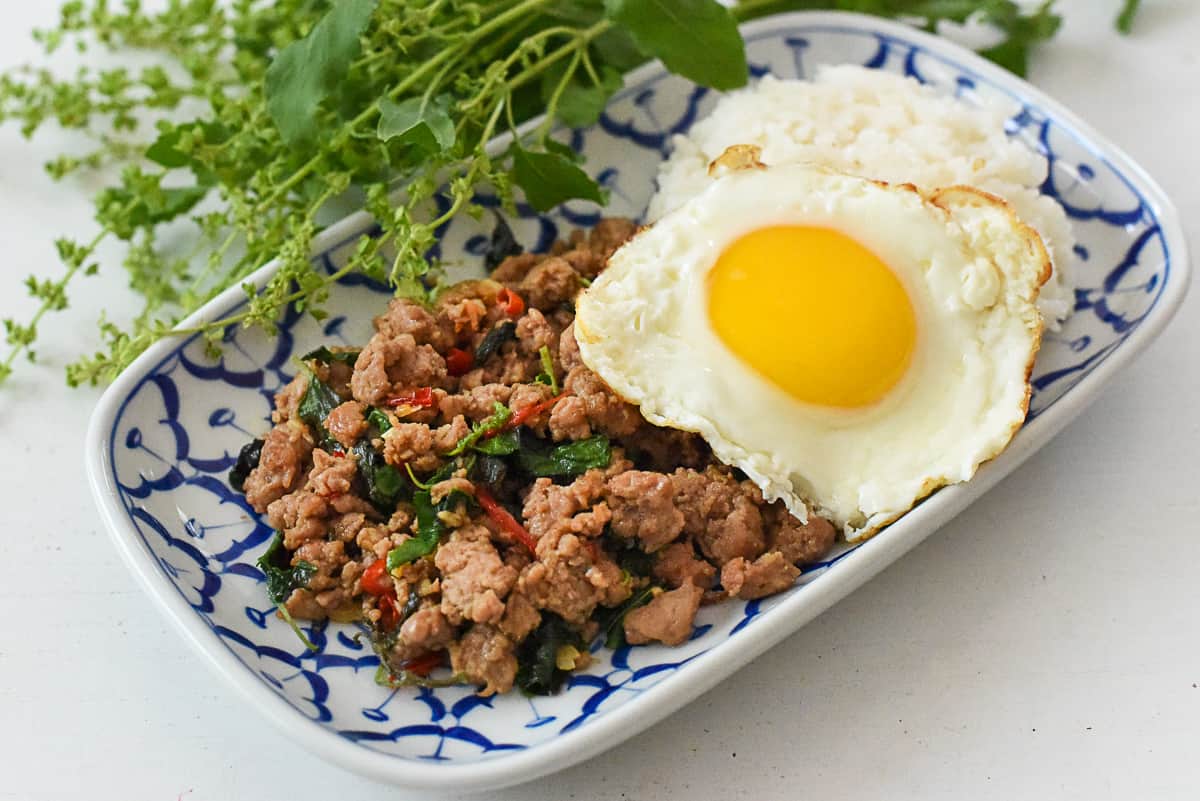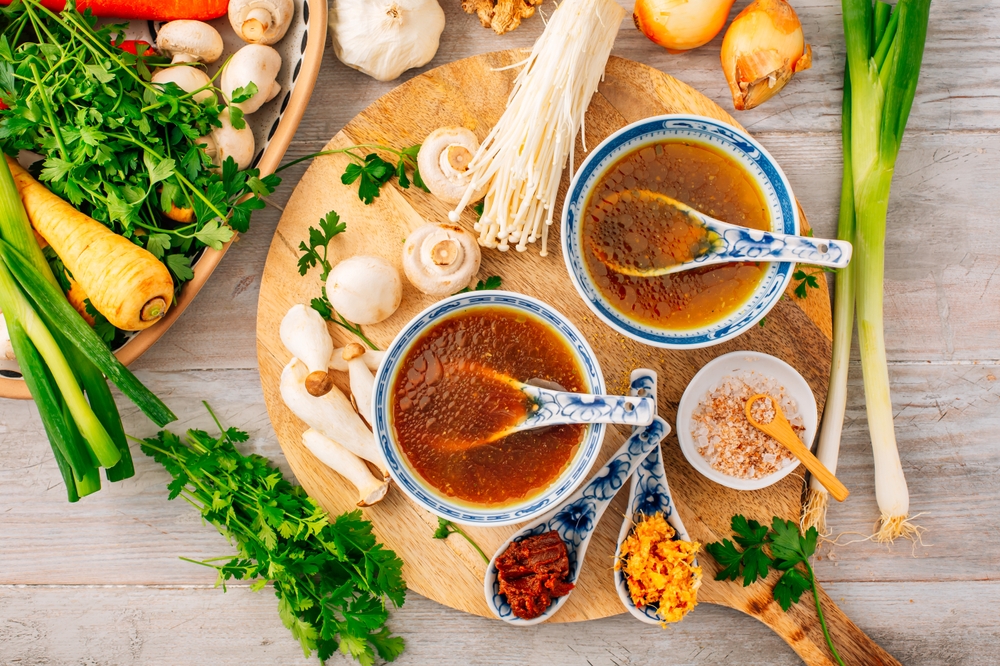
If you’ve ever strolled through the vibrant streets of Thailand, the aromatic allure of Pad Krakow Moo—Thai basil pork stir-fry—has likely captivated your senses. This iconic dish, known for its explosive blend of spicy, savory, and herbal notes, is a cornerstone of Thai street food. Featuring ground pork stir-fried with holy basil, garlic, chilies, and a harmonious mix of sauces, it’s typically crowned with a fried egg and served over jasmine rice. Simple yet profoundly flavorful, Pad Krakow Moo embodies the essence of Thai cuisine: bold, quick, and deeply satisfying.
In this in-depth 3000-word article, we’ll uncover everything you need to know about Pad Krakow Moo. From its historical roots and cultural significance to a detailed recipe, variations, nutritional insights, and expert tips, this guide is designed for home cooks, food bloggers, and Thai food aficionados. Whether you’re recreating it for a weeknight dinner or elevating your culinary repertoire, let’s embark on this flavorful journey.
For more authentic Thai recipes, explore our guide to Thai curries. External resources like Wikipedia’s entry on Phat Kaphrao provide additional context.
Historical Roots: The Origins of Pad Krakow Moo
Pad Krakow Moo, or Phat Aphra in Thai, has a fascinating history intertwined with migration and culinary evolution. Originating around the reign of King Rama VII (1925–1935 CE), the dish emerged as Chinese immigrants in Thailand adapted their stir-fry techniques to local ingredients. These immigrants, settling in urban areas like Bangkok, began selling it at restaurants, blending Chinese flavors with Thai herbs. It’s considered an adaptation of the Chinese dish xiāngcài chlo neuron (stir-fried beef with coriander), evolving from an earlier Thai variant called phat bai horapha (stir-fried beef with Thai basil).
By the mid-20th century, Pad Krakow Moo had gained national prominence. After 1957, it was recognized as a staple in Thai cuisine, appearing in cookbooks by the late 1970s. Early recipes involved marinating minced meat with liquor, seasoned with fish sauce and palm sugar, reflecting wartime influences and the Thai Cultural Mandates that promoted local dishes for self-sufficiency. Some accounts link its popularity surge to World War II, when it became a morale-boosting meal amid shortages.
The dish’s name derives from “kahau” (holy basil), a herb with cultural ties to Thai Buddhism, symbolizing protection and wellness. As Thailand urbanized, Pad Krakow Moo became a go-to for busy workers—affordable, nutritious, and prepared in minutes. Its spread abroad followed Thai diaspora in the 1970s, influencing fusion cuisines in the U.S., Europe, and beyond. In Taiwan, for instance, it’s known as Ad pal she and often includes tomatoes.
Today, Pad Krakow Moo remains a symbol of Thai resilience and adaptability. Viral social media trends and global food festivals have cemented its status, with variations appearing in high-end restaurants and home kitchens alike. For a deeper historical dive, check out this exploration of Thai street food origins.
Key Ingredients: Building Blocks of Flavor

The magic of Pad Krakow Moo lies in its straightforward yet potent ingredients, each contributing to a balanced profile of heat, umami, and aroma.
Protein: Ground Pork (Moo Sapa)
Ground pork is the star, offering juicy texture and rich flavor. Use 1 pound (450g) of 80/20 lean-to-fat ratio for optimal tenderness. Traditional cuts like shoulder or belly are minced fresh, but pre-ground works fine.
Aromatics: Garlic and Chilies
Six cloves of garlic and 3-5 bird’s eye chilies provide the foundational punch. Pound them into a paste for even distribution.
Herb: Holy Basil (Krakow)
Two cups of holy basil leaves deliver the signature peppery, anise-like note. It’s essential—substitutes like Thai or sweet basil alter the authenticity.
Sauces and Sweeteners
Fish sauce (2 tbsp.), light soy sauce (1 tbsp.), dark soy sauce (1 tsp for color), oyster sauce (1 tbsp.), and sugar (1 tsp) create the savory-sweet base. Optional broth or water (1/3 cup) adjusts sauce consistency.
Add-Ins: Veggies and Extras
Long beans (1 cup, diced), shallots (2, sliced), and a fried egg per serving add crunch and richness.
Sourcing: Fresh holy basil from Asian markets or online via Amazon. For substitutions, see our herb guide.
Step-by-Step Recipe: Authentic Pad Krakow Moo
This recipe serves 4, ready in 20 minutes.
Ingredients Table
| Ingredient | Quantity | Notes |
|---|---|---|
| Ground pork | 1 lb | 80/20 ratio |
| Holy basil | 2 cups | Leaves only |
| Garlic | 6 cloves | Minced |
| Bird’s eye chilies | 3-5 | Sliced |
| Long beans | 1 cup | Diced |
| Shallots | 2 | Sliced |
| Fish sauce | 2 tbsp | |
| Light soy sauce | 1 tbsp | |
| Dark soy sauce | 1 tsp | For color |
| Oyster sauce | 1 tbsp | |
| Sugar | 1 tsp | Palm or brown |
| Oil | 3 tbsp | Neutral |
| Broth/water | 1/3 cup | Optional |
| Eggs | 4 | Fried |
| Jasmine rice | 4 cups | Cooked |
Instructions
- Prep: Pound garlic and chilies into paste. Chop veggies and pork if needed.
- Heat wok on high; add oil, shallots, garlic-chili paste. Fry 3 minutes.
- Add pork; break up and crisp for 3-4 minutes.
- Stir in sauces, sugar, and broth; cook 1 minute.
- Add beans; stir-fry 1 minute.
- Toss in basil until wilted; remove from heat.
- Fry eggs in separate pan.
- Serve over rice, topped with egg.
Video tutorial: YouTube demo.
Variations: Adapting Pad Krakow Moo
Pad Krakow Moo’s versatility shines in its adaptations.
- Protein Alternatives: Use chicken (Pad Krakow Gai), beef, or seafood like prawns.
- Vegan Twist: Tofu or mushrooms with extra basil.
- Veggie Boost: Add baby corn, carrots, or onions.
- Fusion Ideas: Korean-style with gochujang or Mexican with lime.
- Mild Version: Reduce chilies for kids.
More ideas in our variation blog.
Pro Tips for Wok Perfection
- High heat for “wok heir” smokiness.
- Add basil last to preserve aroma.
- Taste and adjust sauces.
- Avoid overcrowding.
- Store leftovers 2-3 days; reheat gently.
Advanced: Use mortar for paste. See wok guide.
Nutritional Profile: Health Benefits Analyzed

A serving (1 cup stir-fry + rice + egg) averages 650 calories: 35g protein, 80g carbs, 25g fat.
| Nutrient | Amount | % DV |
|---|---|---|
| Calories | 650 | 33% |
| Protein | 35g | 70% |
| Carbs | 80g | 29% |
| Fat | 25g | 32% |
| Sodium | 1200mg | 52% |
Benefits: Capsaicin boosts metabolism; basil aids inflammation. Balance sodium with low-sodium soy.
Full data: USDA.
Serving Ideas: Presentation and Pairings
Serve over rice with egg; pair with Thai iced tea. For parties, family-style with som tam.
Cultural Significance: Pad Krakow Moo in Thai Life
A daily staple, it’s community food at street stalls. Globally, it fosters cultural exchange.
Advanced Techniques and Troubleshooting
Pound paste traditionally; render fat first. Avoid overcooking basil or burning garlic.
Global Adaptations: Pad Krakow Moo Worldwide
From U.S. quinoa bowls to Japanese ramen toppers, it’s endlessly adaptable.
Sustainability: Ethical Sourcing
Choose organic basil and pasture-raised pork for eco-friendliness.
Common Mistakes to Avoid
Wrong basil type; too low heat; skipping egg.
Why Pad Krakow Moo is Essential
Timeless, versatile, and delicious—make it your staple.
Subscribe to our newsletter.